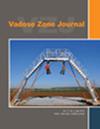全球砷研究中的浸润带视角:回顾与未来机遇
IF 2.8
3区 地球科学
Q3 ENVIRONMENTAL SCIENCES
引用次数: 0
摘要
很少有污染物能比致癌物质砷(As)对人类健康和环境造成的破坏性影响更大。作为饮用水源的地下水受到地质砷污染,继续威胁着全球数亿人的生命,南亚和东南亚的砷危机经常被称为 "历史上最大的大规模中毒事件"。此外,工业活动(如采矿和冶炼过程、木材防腐以及历史上杀虫剂的使用)造成的人为砷污染已形成了大片受到严重污染的土壤和水体,亟需采取补救措施。由于对环境质量产生了深远的负面影响,岩土也一直是大量科学研究的重点。尤其是旨在了解不同饱和多孔介质中的流体流动和污染物迁移的浸润带研究,对于确定砷污染源、预测砷在自然和工程系统中的归宿以及帮助指导监管机构、政策制定者和从业人员最大限度地减少砷的影响至关重要。在这项工作中,我们回顾了全球砷研究中的几个关键课题,这些课题都是由浸润带知识推动的。这些课题包括地层砷向地下水的释放、人为砷污染的修复以及砷处理系统的设计和运行。在本综述的最后,我们强调了砷研究中迫切而重要的知识缺口,这些缺口可以从对岩土带过程更严格的了解中获益。本文章由计算机程序翻译,如有差异,请以英文原文为准。
Vadose zone perspectives in global arsenic research: A review and future opportunities
Few contaminants have been linked to more devastating human health and environmental impacts than carcinogenic arsenic (As). Geogenic As contamination of groundwater used as a drinking water source continues to threaten hundreds of millions of lives worldwide, with the As crisis in South and Southeast Asia often called “the largest mass poisoning in history.” In addition, anthropogenic As pollution derived from industrial activities (e.g., mining and smelting processes, wood preservation, and historic pesticide use) has created large sites of intensely contaminated soils and water bodies that urgently require remediation. Because of its profound negative impacts on environmental quality, As has also been the focus of considerable scientific research. In particular, vadose zone research, which aims to understand fluid flow and contaminant transport in variably saturated porous media, has been critical to identify sources of As contamination, predict the fate of As in natural and engineered systems, and help guide regulatory agencies, policymakers, and practitioners to minimize As impacts. In this work, we review several key topics in global As research that have been advanced by vadose zone knowledge. These topics include the release of geogenic As to groundwater, the remediation of anthropogenic As contamination, and the design and operation of As treatment systems. We end this review by highlighting urgent and important knowledge gaps in As research that can benefit from a more rigorous understanding of vadose zone processes.
求助全文
通过发布文献求助,成功后即可免费获取论文全文。
去求助
来源期刊

Vadose Zone Journal
环境科学-环境科学
CiteScore
5.60
自引率
7.10%
发文量
61
审稿时长
3.8 months
期刊介绍:
Vadose Zone Journal is a unique publication outlet for interdisciplinary research and assessment of the vadose zone, the portion of the Critical Zone that comprises the Earth’s critical living surface down to groundwater. It is a peer-reviewed, international journal publishing reviews, original research, and special sections across a wide range of disciplines. Vadose Zone Journal reports fundamental and applied research from disciplinary and multidisciplinary investigations, including assessment and policy analyses, of the mostly unsaturated zone between the soil surface and the groundwater table. The goal is to disseminate information to facilitate science-based decision-making and sustainable management of the vadose zone. Examples of topic areas suitable for VZJ are variably saturated fluid flow, heat and solute transport in granular and fractured media, flow processes in the capillary fringe at or near the water table, water table management, regional and global climate change impacts on the vadose zone, carbon sequestration, design and performance of waste disposal facilities, long-term stewardship of contaminated sites in the vadose zone, biogeochemical transformation processes, microbial processes in shallow and deep formations, bioremediation, and the fate and transport of radionuclides, inorganic and organic chemicals, colloids, viruses, and microorganisms. Articles in VZJ also address yet-to-be-resolved issues, such as how to quantify heterogeneity of subsurface processes and properties, and how to couple physical, chemical, and biological processes across a range of spatial scales from the molecular to the global.
 求助内容:
求助内容: 应助结果提醒方式:
应助结果提醒方式:


